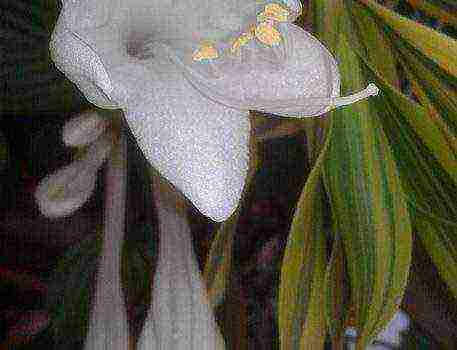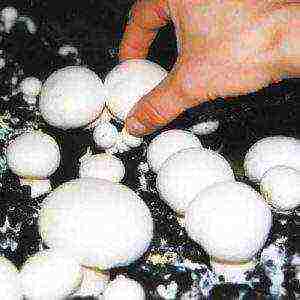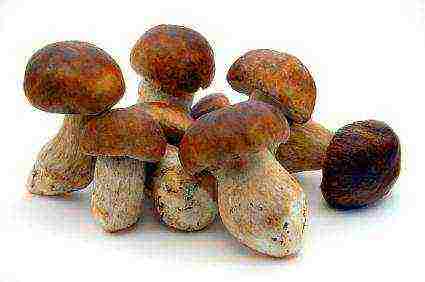Content [show]
Berry physalis, unlike vegetable, is more capricious and less resistant to frost. However, it is quite possible to grow it on a balcony or windowsill. All your labor is offset by the sweet taste of the berries.
The choice of physalis varieties for growing on the balcony and windowsill
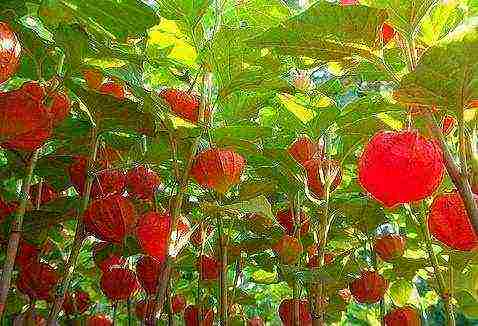
Physalis on the windowsill
The Raisin variety gives sugar berries that are not large in size, but have a bright aroma and a very pleasant taste. The fruits can be eaten fresh, dried, processed.
The Pineapple variety produces small fruits. Their aroma is similar to pineapple, the taste is sweet, very pleasant. The appointment is universal.
Strawberry physalis forms bushes about 70 cm high. Fruits are small, amber, very sweet, with strawberry taste and aroma. The appointment is universal.
Growing physalis on a windowsill
How to grow physalis at home? For planting on loggias, seeds are used - they are sown in March, after having kept for 20 minutes in a pink solution of potassium permanganate, and then dried. If there is any doubt about the germination of seeds, you can hold them for 12 hours in water mixed with Epin (1-2 drops / 100 ml).
The soil mixture is prepared from peat, humus, turf and sand (2/1/1 / 0.5). If the peat has an acidic reaction, add wood ash (0.5 st. / 5 l). The mixture is steamed for an hour to get rid of possible pests.
The depth of immersion of the seeds is 1-2 cm. The sowing is watered with warm water and left on the sunny side, covered with a film (it must be removed daily for airing).
Seedlings are transplanted into separate pots after a couple of leaves appear. Drainage is placed on the bottom and the pots are filled with soil mixture prepared according to the previously indicated recipe (the sand rate can be reduced, and mineral fertilizer should be added to 5 liters of the mixture - 1 tablespoon). The plants are deepened to the cotyledonous leaves. The earth should not reach the edge of the pot by 1/3 of the volume. As the plant grows, soil must be added to form a strong root system.
Physalis care on the balcony and windowsill
Since fiazlis needs 12-hour daylight hours, in March the plants are illuminated for 3-4 hours. Watering should be regular. At first, the plants are shaded from direct sunlight. With an interval of 2 weeks, they are fed, alternating organic matter (mullein / water - 1/8) and a complex of minerals (1 tablespoon / 1 bucket). The forming stepchildren are cut off. If necessary, the plants are provided with support.
Physalis is easy to grow in a pot at home - it is only important to follow the rules indicated above. Sweet fruits will be a worthy reward for you.
Physalis is a very beautiful perennial plant that loves warmth. However, it can be grown not only in the garden, but also in an ordinary apartment as a one-year old. A distinctive feature of this plant is the so-called "flashlight", inside which there is a fruit - a berry. There are quite a few varieties of physalis, and it is grown mainly in South and North America, as well as Europe and Asia.In the wild, this plant can be found on the shores of the Black Sea near the Caucasus. Among the huge number of varieties, only two are considered cultural: strawberry and Mexican. The first at home can reach a height of about 35 centimeters, and the second about 70.
Both types are distinguished by wide oval-shaped light green leaves, as well as small self-pollinating flowers with a light green color. The fruit can differ in different shades, ranging from purple to yellowish. The berry itself stands out for its pleasant taste and is suitable for consumption in absolutely any form. Growing physalis on a windowsill is beneficial both from a decorative and a practical point of view, because its fruits are much healthier than most varieties of peppers and tomatoes.
Important rules for growing
Of course, you can highlight a lot of positive aspects in having your own physalis on the balcony. These include the presence in the composition of the fruits of this plant of useful organic acids, various biological active substances and other components. But you can enjoy all these advantages only if you have such a wonderful plant at home. When growing physalis at home, you should choose among such varieties of varieties as confectionery, soil, Moscow and their analogues. They take root well, and also have a high content of vitamins useful to humans.
If you have chosen a loggia or a balcony for growing physalis on the windowsill, then you need to take care of the correct temperature regime and sufficient lighting, because this plant is very fond of light and warmth. In spring and summer, you can simply put the pots on the balcony overlooking the sunny side without worrying about proper growth, because Physalis grows well at an average temperature of 21 degrees and above, as well as a lot of sunlight. But in autumn and winter, you can get the same rich and numerous fruits only on a warmed balcony.
Growing procedure
For standard room conditions, it is necessary to use the seedling technique. In this case, it is assumed that the seeds of the plant are sown in small boxes. After that, the best are traditionally selected from them and seated in large pots with a diameter of about 18 centimeters or in separate large boxes. At the same time, you need to grow physalis at home on a fairly spacious balcony, because the distance between plants should be no less than 20-25 centimeters. For a bush, use pinned methods or a garter is not required.
Caring for the plant is extremely simple, and even a novice florist can cope with it. To do this, it is enough just to occasionally water the plant and feed it every 10 days. As fertilizers, you can use universal solutions that can be found in any store, or any concentrated and liquid options. If you did everything correctly, then in about two months you will be able to harvest the first fruits from the plant. If you want to improve the quality of branching, then you need to pinch the shoots at the top of the plant.
The plant can be propagated using seeds. The most optimal temperature conditions for their germination are considered to be 20 degrees Celsius. After that, the seedlings can be planted (when they are about 25 days old) in boxes or pots.
Potential diseases and other problems
Usually when growing physalis at home in a potThere are no problems, because the varieties of varieties listed above have very few diseases and pests. However, they do exist, and it is best to familiarize yourself with them right away. As for pests, they are represented by a wireworm and a garden scoop. The first is very rare, but you need to be careful with the scoop. If you notice damage to only a few fruits on numerous plants, then you do not need to worry about this, because the use of any drugs is not required.But in the case when the problem is much more significant, you should resort to insecticides. Additionally, it is worth noting that the garden scoop can only damage green fruits, and therefore it makes sense to worry only about their safety.
Sores can be divided into mainly three types: bronze, fusarium, and leaf twisting. For Fusarium, stopping the growth of the plant and its subsequent yellowing is relevant. This process begins at the top of the plant, and then spreads throughout the physalis. The other two diseases also contain cessation of growth from the consequences, but besides this, the leaves also curl. For bronze, it is also important that they acquire a bronze shade, as evidenced by the name of the disease.
Fusarium is triggered by fungi that can penetrate damaged roots, so you need to be careful when transplanting plants. If the fungus has already got inside, then physalis cannot be grown at home, since the conducting system of the plant will be clogged with hyphae. Twisting and bronze, in turn, are caused by viruses affecting the cellular structure of the plant. Alas, it is simply impossible to cure physalis from these ailments. If you notice at least one of them, then the damaged plant must be immediately removed from healthy ones. It is better to destroy the sick immediately (burn or take out in the trash). It is also recommended to dispose of the soil in which the plant grew, because new physalis and many other flowers will not take root in it.
Bright orange, yellow, emerald lanterns of physalis in flower beds always attract attention. And although this culture was brought to Russia in the 19th century, it has remained exotic. Nowadays, it is most often planted as a decoration for a personal plot. It is unpretentious to climatic conditions and stands out favorably among other garden plants. To appreciate the attractive properties of physalis, you need to get to know this culture better.
Physalis types
Even experienced gardeners and gardeners feel a little confused looking at the counters with physalis seeds. Indeed, today a large number of varieties of this plant are presented on the market. To navigate in a gardening center or store, it is important to know which of the three types of physalis is needed for the site:
- Decorative. It is designed to decorate the landscape, it stands out brightly against the background of greenery. Note that decorative physalis is poisonous. During flowering, the physalis forms a neat orange flashlight. It is also called the "Chinese lantern". The Franchet variety also belongs to the decorative type. Its fruits are rich in cherry color. Franchet is less popular in our country than the Chinese lantern. The decorative physalis is perfectly preserved in the form of dried flowers. Often housewives, flower shop owners and designers use it to create flower arrangements, wreaths and bouquets in the winter. The fruits of the ornamental physalis are the smallest. Their weight is only 2 grams.

For its rich orange color, one of the varieties received the nickname "Chinese lantern"
- Vegetable. It is used for pickles, salads and appetizers. The weight of one fruit of vegetable physalis can reach 90 grams. In our country, gluten-fruited vegetable physalis is the most popular. The second name is Mexican tomato.
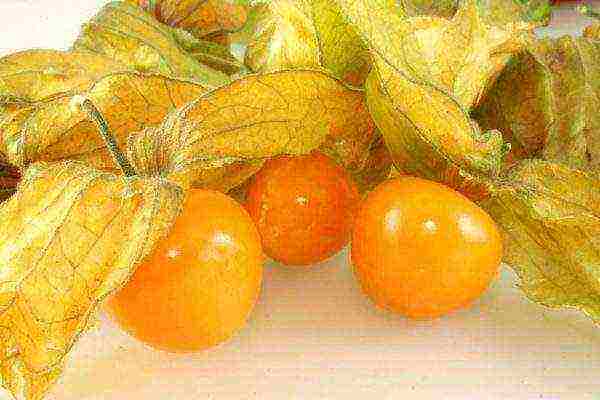
Vegetable physalis - a "relative" of tomatoes
- Strawberry. It is actively used in canning. Jams and preserves are made from it, as well as delicious desserts. The fruits of this species are not large, the weight of one of them reaches 10 grams. Berry Physalis is divided into three subspecies: Peruvian, Florida and Raisin. Peruvian has a rich citrus aroma and flavor, it is dried and jam is made from it. Florida physalis is good for jam that tastes like sweet cherries.Raisin is perfect for drying. The bright tangerine aroma of physalis is preserved even in jam.
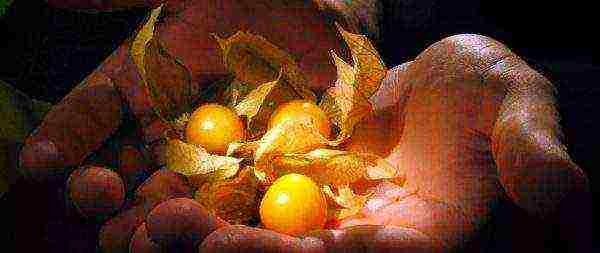
Physalis berry varieties taste like strawberries, pineapple and grapes
When choosing physalis for planting in a vegetable garden or garden, it is worth focusing on the early maturity of the variety. For regions with a cold and short summer period, it is worth choosing physalis with an early ripening period.
Popular varieties
No matter how decorative physalis decorates the landscape, most gardeners try to combine the aesthetic appearance of plants and practicality. Therefore, preference for planting is given to a vegetable or berry species. After all, they look no less bright in a flower bed, but at the same time they are eaten. The most popular edible varieties are physalis:
- Gribovskiy 2046. This is a mid-early variety. Physalis is resistant to cold weather. High-yielding. Fruits are yellow-green, round in shape. Slightly flattened.
- Pineapple. The variety is early maturing. The fruits are small, have a sweet taste and rich pineapple aroma. Physalis is used fresh, as well as in the preparation of preserves, jams and candied fruits.
- Marmalade. Mid-season variety. The plant grows up to 1.5 m. Fruits are flat-round, with a pronounced plum flavor. Unripe fruits are green in color. Ripe berries become creamy. The yield of the variety is 1.3–1.4 kg per 1 m2. They are used in the preparation of preserves, candied fruits and jams.
- Strawberry. Plant height 70 cm. Fruits are small, amber in color, with a strawberry flavor and aroma. It is consumed dried, fresh and canned.
- Kinglet. Vegetable physalis, early maturing. The plant grows up to 80 cm. Cold hardy. Grown through seedlings. In the southern regions, it is possible to plant seeds in open ground. Large-fruited. The weight of one fruit varies from 60 to 90 g. Sweet and sour taste. Differs in high productivity: from one Korolka bush, you can collect up to 5 kg of fruits. Practically versatile in cooking. Dry wine, jams, preserves, caviar, marinades are prepared from Korolk.
- Confectioner. Medium early grade. The period from emergence to the beginning of fruiting is 110-115 days. Cold resistant. The bush is 60–80 cm high. Fruits are flat-round, yellowish in color, weighing 30–40 g. Resistant to diseases. It is planted with seedlings, in the southern regions it is possible to plant a Confectioner in open ground. After harvest, fruits can be stored for up to 3 months in a cool place. Caviar, candied fruits, dry wines and preserves are made from this variety.
- Wizard. Mid-season variety. Heat-loving. The fruits are rich in pectin and trace elements. Suitable for cooking jams, jellies and marinades.
- Raisin. Early ripe variety. Heat-loving. Raisin prefers well-lit areas. Not picky about the soil. Low-growing plant. The height of the bush reaches only 45 cm. The fruits are considered small. The weight of one fruit is 6–10 g. The color of ripe fruits is yellow.
- Gold placer. The variety is early maturing. The plant is considered undersized, since the height of the bush is 35 cm. It is planted with seedlings. The fruits are golden in color. The mass of one berry is 5–7 g. The yield is high.
- Bell. The variety is mid-season. The plant is highly branched. Reaches a height of 1 m. Fruits are flat-round, orange. The weight of one fruit varies from 7 to 10 g. The peculiarity of the Kolokolchik variety is that it is hardy to adverse weather conditions and undemanding to the soil. Used fresh, in marinades and preserves.
Video: Marmalade, Korolek and Confectioner and other varieties of physalis
We plant physalis
In order for physalis to please in summer and autumn with a good harvest, you need to familiarize yourself with some of the preferences of this culture:
- Physalis needs a lot of sunlight. Therefore, a well-lit place is chosen on the site.
- Water should not stagnate on the flower bed after precipitation falls.
- A flowerbed for planting physalis must be pre-cultivated.If, before the physalis was transplanted into it, a variety of crops grew in the flowerbed, this will have a positive effect on the growth and productivity of the plant.
- Physalis does not like weeds. After planting, the flowerbed will have to be weeded periodically.
- This plant does not tolerate acidic soil. Physalis either does not take root in such a land, or is constantly ill. To correct the composition of the soil on the site, it is worth worrying about liming in advance. You can add quicklime, wood ash, "Fluff" or dolomite flour to the soil according to the instructions on the package.
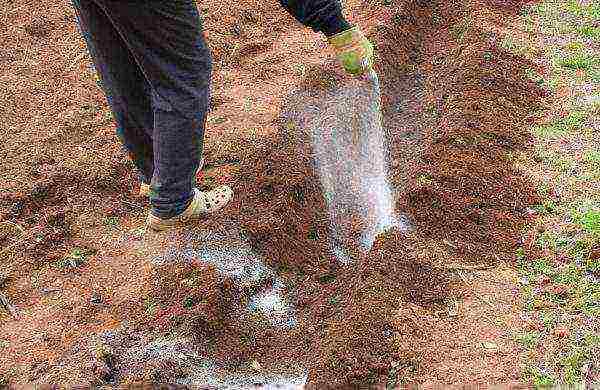
In order for physalis to be planted in an area with acidic soil, the soil must be limed
If there is no suitable place for planting physalis in the garden, you can do it yourself. In areas where water often accumulates, earthen ridges should be poured. Or create high beds.

High beds are a great solution for frequently flooded areas.
Physalis grows well in a flower bed after any cultural predecessors, except for nightshades. After growing tomatoes, peppers or potatoes on the site, you need to plant other crops in these places for 2-3 years. Only under this condition, after nightshades, it will be possible to plant physalis.
At the same time, tomatoes, peppers, green onions, lettuce will be good neighbors for physalis. But do not plant peas, beans, cucumbers, aromatic and spicy herbs nearby.
Features of seed reproduction
Physalis is most often propagated by seed. They are planted on seedlings or directly in open ground - depending on climatic conditions. Physalis can be grown in a greenhouse, garden or at home.
To plant physalis seeds, you will have to equip a home greenhouse. You can tighten the box with the sown seeds with an opaque film and put it in a warm place. The seeds are planted to a depth of 10-15 mm. Despite the fact that physalis is not picky about the soil, it must be planted in loose soil. If at home there are no problems with this, then in a greenhouse or garden the soil will need to be prepared in advance.
The earth needs to be dug up to fill it with oxygen. If you plan to plant physalis in the spring, then in the fall the garden can be fertilized with manure, humus or compost. For good germination of seeds, a temperature of 17-18 degrees above zero is required. Physalis seedlings are sown at the end of March. And in open ground, planting is carried out no earlier than mid-May. By this time, the soil should warm up to at least +10 degrees.
Transplanting seedlings into open ground is carried out at the end of May. Plants are planted in the afternoon when the sun is less scorching. This will allow the seedlings to quickly adapt to the new environment. Before transplanting, physalis needs to be watered abundantly to make it easier to separate the bushes. Strongly elongated seedlings can be lowered into the hole, laying the stem in a spiral. In this case, the lower leaves are removed. Then the plants are covered with earth.
Physalis is not recommended to plant often. This can lead to lower yields.
The distance between the rows must be at least 0.5 meters. In order not to overdo it with the amount of seeds when planting, gardeners are advised to mix the seeds with fine sand. This will help to seed the area with physalis evenly. No more than 5 bushes should grow per 1 m2.
Video: planting physalis seedlings in a greenhouse
Physalis pick
Physalis dive after 2-3 leaves appear in the plant. Before you start picking, you need to prepare pots or plastic cups with loose soil. Only after that do they start planting plants:
- Physalis is watered abundantly before diving. This makes it easier to separate the plant roots from each other.
- With a pointer, a pen or any other convenient object, a depression in the form of a funnel is made in a glass with earth.
- If the seedlings are tall, then the hole can be made to the full depth of the glass. Physalis will subsequently develop a powerful root system.
- Warm water is poured into the well, to which the growth stimulator HB 101 is added.It is an organic product that promotes the active growth and development of plants. For 1 liter of water, 1 ml of the drug is required.
- Plants are divided among themselves. And they sink into the cups. You can plant 1-2 seedlings in one hole.
- The soil is lightly compacted. If the volume of the cup allows, you can add the earth on top.
- Physalis, after a pick, is placed in a warm, but not hot place.
Video: how to dive physalis
Growing physalis
Physalis does not need special care after transplanting into open ground, a pot or a greenhouse. This is a rather unpretentious plant.
Basic conditions for caring for physalis:
- The main requirements are still an abundance of sunlight and warmth.
- Unlike other nightshades, it does not need to be pinned.
- Only vigorous varieties are tied up, reaching 70-100 cm in height.
- Physalis only needs timely watering and weeding.
- The earth is periodically loosened so that a crust does not form and the soil does not crack.
- The plant must be periodically inspected to prevent the occurrence of diseases.
- When diseased bushes are found, the plants are harvested and burned so that the disease does not spread.
Video: growing physalis in a pot
Plant agrotechnology
Any plant, including physalis, needs fertilizing. This increases the endurance and yield of the crop. Physalis roots grow deeper, so fertilizers that are on the soil surface are not fully used. Physalis should be fed every 14 days starting in mid-June. You can feed the plants with the following fertilizers:
- Manure solution. The ratio with water is 1: 5.
- Mullein solution. The ratio is 1: 8.
- Poultry manure solution mixed with wood ash. For 1 kg of organic matter, 15 liters of water and 0.2 kg of ash are taken.
- Ash can be replaced with superphosphate (50 g) and add 1 tbsp. l. potassium salt.
- Urea. It is diluted in an amount of 10 g per 10 liters of water.

In the absence of organic fertilizers, urea can be used
As for regular watering of physalis, they are necessary for young plants. An adult physalis needs systematic watering only during a drought period.
Diseases and pests
Of all the nightshades, physalis is the least susceptible to disease. The most common diseases for this plant:
- Late blight. Physalis rarely gets sick with it. This happens when the weather is rainy for a long time. Fogs, high humidity of air and soil can be the culprits of late blight. It manifests itself as brown spots that form under the skin of the fruit. Such berries must be removed from the bushes immediately.
- Blackleg. It affects physalis seedlings. The main cause of the disease is sowing the plants too often. The secondary conditions for the development of the black leg are high humidity and poor ventilation of the flower bed. Fighting this disease is quite simple. It is necessary to thin out physalis, destroy weeds and reduce the frequency of watering.
- Mosaic. To avoid this virus, basic crop rotation requirements must be followed. Physalis can be transplanted to a new place, but it will be possible to return the plant to the previous flower bed only after 4 years.
- Of the pests for physalis, only the bear and the wireworm are dangerous. You can fight them using folk methods. For example, planting lupins, alfalfa, mustard or salad nearby. You can decompose the superphosphate granules by spraying them with a solution of your choice: Decis, Karate, Provotox or Actellik. These insecticides are the least toxic to humans.
Growing physalis in the regions
There are no zoned varieties of physalis for the Urals, Siberia, Ukraine or the Volga region. Gardeners and gardeners are guided by the duration of the warm season, choosing one or another variety for planting. But based on long-term observations and experience of specialists, it is possible to draw conclusions which varieties develop better on the territory of different regions.
Table: Physalis varieties for growing in different climates
Reviews of gardeners about growing physalis
The variety of physalis varieties is good news.But when choosing plants for your garden, it is important to remember that some varieties are decorative. Others can be applied in landscaping, but fully utilized in culinary experiments. After all, this culture is truly unique and deserves due attention.
Photographer, copywriter. Work experience 8 years. Knowledge of English, German. Rate the article:
(1 vote, average: 4 out of 5)
